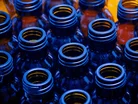How packaging can be used to reduce food waste

Food and beverage packaging has gained an unfair reputation for spoiling the countryside, polluting the oceans and harming wildlife. As a result, there are many drives to reduce the amount of packaging used in the food industry. However, wasted food is also an environmental problem, which packaging can help solve. Here, Robert Glass, global food and beverage communications manager at ABB, explains how packaging can be used to reduce the amount of food wasted, and have a positive effect on the environment.
According to The Food and Agriculture Organisation of the United Nations, one-third of food produced for human consumption is wasted. This amounts to an annual total of approximately 1.3 billion tonnes worldwide.
This waste occurs throughout the supply chain. Food waste can occur at the farm, in transit, and during manufacturing. Further down the supply chain, supermarkets and consumers discard food that’s not visually appealing or has reached its expiration date.
By reducing waste, the food industry can reduce energy consumption, benefitting the environment and saving businesses money. Moreover, livestock, in particular cattle, are associated with greenhouse gas emissions. Reducing the waste of beef products will result in fewer cattle contributing to these emissions unnecessarily. Overall, food packaging plays an important role in helping to reduce food waste and minimize the amount of packaging used. Here are five ways this can be achieved.
Intelligent packaging
Many people discard food that is still safe to eat, simply because they’re unsure how long the packaging has been open or they feel it has been open “too long.” Some avoid this by writing the date on packaging when its opened, but this is difficult to sustain.
An alternative solution is intelligent packaging, which involves a small patch of smart plastic that changes colour with the surrounding conditions. This could be used to indicate how long packaging has been open and allows the consumer to only discard food that is unsafe to eat.
Delivery drivers could also use intelligent packaging to monitor the condition of the food they transport and adapt their processes to improve food preservation. This would result in less food being discarded on arrival.
Snap-pack packaging
Since the 1960s, the number of single-person households has dramatically increased. However, perishable foods, such as meat, are still packaged with family cooking in mind and packaging only helps to preserve them when sealed. This means small households often end up throwing away the remaining unused food once the packaging has been opened.
To help reduce this, in 2016, Sainsbury’s launched snap-pack packaging for its Taste the Difference sausages. The sausages come in packs of eight, with a peelable seal splitting them into two sets of four. This means four sausages can be consumed and the other four remain enclosed in sealed packaging.
Active packaging
Active packaging preserves food for longer, using substances that make the environment surrounding the food less favourable for microorganisms that cause food to decay.
SEE ALSO:
- Kellogg's UK announces new sustainable packaging drive
- PepsiCo aims to use 25% recycled plastic packaging by 2025
- Unilever joins forces with Veolia for sustainable plastic packaging partnership
One example is a range of products that use a material containing ferrous iron oxide, an oxygen scavenger that reduces the oxygen levels inside the packaging. It was originally used as a powder but has now been developed into self-adhesive patches that fit any packaging.
Another approach to active packaging is to use antimicrobial agents. This could eliminate the need for chemical additives currently used in foods to reduce microbial growth, which has triggered widespread safety concerns.
Vacuum packaging
Vacuum packaging has been used as a cost-saving technique since the 1940s. It involves removing the air from the packaging before sealing it.
The main purpose of this is to remove oxygen from the environment surrounding the food, to make it less favourable for microorganisms. It also helps to prevent oxidation of meat, which changes the meat’s colour and increases the chances of it being thrown away.
Another benefit of vacuum packaging is that it helps prevent freezer burn and dehydration of food. This extends product shelf life and makes it more appealing to consumers, resulting in less waste.
Modified atmosphere packaging
Modified atmosphere packaging involves enclosing food with specific concentrations of oxygen, carbon dioxide and nitrogen. It helps to preserve the food’s safety, colour, taste and nutrient content.
This is a unique packaging technique because the concentrations of gas can be tailored to give the optimal preservation for each specific food. For example, red meat best retains its colour in a high oxygen atmosphere, whereas bread should be kept in a low oxygen environment to prevent mold formation.
Committed to helping reduce waste
At ABB, we help food and beverage manufacturers to improve their production process, from power to palletizing. For example, laser level transmitters enable businesses to more accurately measure ingredients in a silo and our ABB Ability™ Manufacturing Operations Management system helps identify process optimization improvements. These applications allow manufacturers to reduce food waste.
The Industrial Internet of Things and digitalization, combined with the range of waste-saving packaging initiatives on the market, provide the packaging industry with the opportunity to help us all reduce food waste.
- Unilever Speaks on Failure of Global Plastics TreatySustainability & ESG
- Primark & H&M: Pursuing Textile Manufacturing CircularitySustainability & ESG
- ABB & NKT: Electrifying World's Largest Submarine CableSustainability & ESG
- Oxagon: The Five Key Manufacturing Principles of the FutureSustainability & ESG

